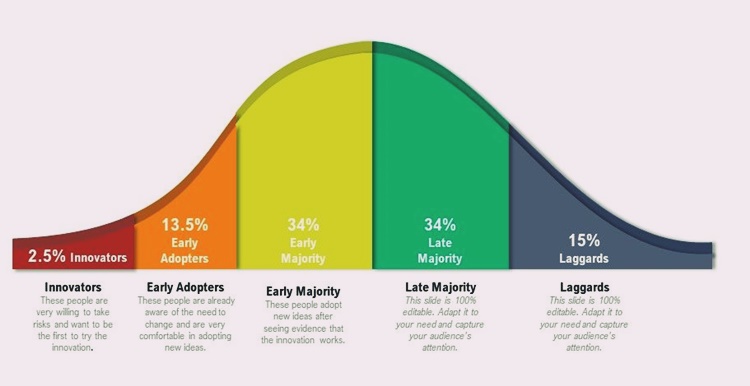The diffusion of innovation theory was first introduced in 1962 by Everett Rogers. In health promotion, this theory defines as a process in which an innovation is communicated through channels over time among the members of a social system.
In health promotion, innovation comes in the form of ideas, techniques, behaviors and programs. Then in this theory there are categories of adoption rate for an innovation.
Adopter Categories in Diffusion of Innovation Theory

- Innovator is the first to adopt innovation. They are adventurous, independent, and dare to take risks, also have a desire to be the first to do something.
- Early adopters is the group which very interested in innovation, but they don’t want to be the first to get involved.
- Early majority, this group follows the early adopters. The innovation is interesting for them, but they need some external motivation to get involved.
- Late majority is a category of people who are in doubt. They will not adopt an innovation until most people in the environment do
- Laggards are the last group who try the innovation.
In the adoption of an innovation, there are several issues related to the characteristics of innovation which influence of the fast or slow one follows these innovations.
Starting from relative advantages, suitability of innovation with daily life, complexity, triability before adoption, and the last one is observability.
Notes from DeveHealth:
This innovation diffusion theory is not a theory specifically for health sector, but its application can be used in various innovations. This theory also use to identified behavioral changes and in the application of community empowerment.
References:
- Cottrell, R. R., Girvan, J. T. & McKenzie, J. F. (2012). Principles and Foundations of Health Promotion and Education 5th Edition. San Francisco: Pearson
- Cain, Mari and Robert Mittman (2002). Diffusion of Innovation in Health Care. California: Institue for The Future.




